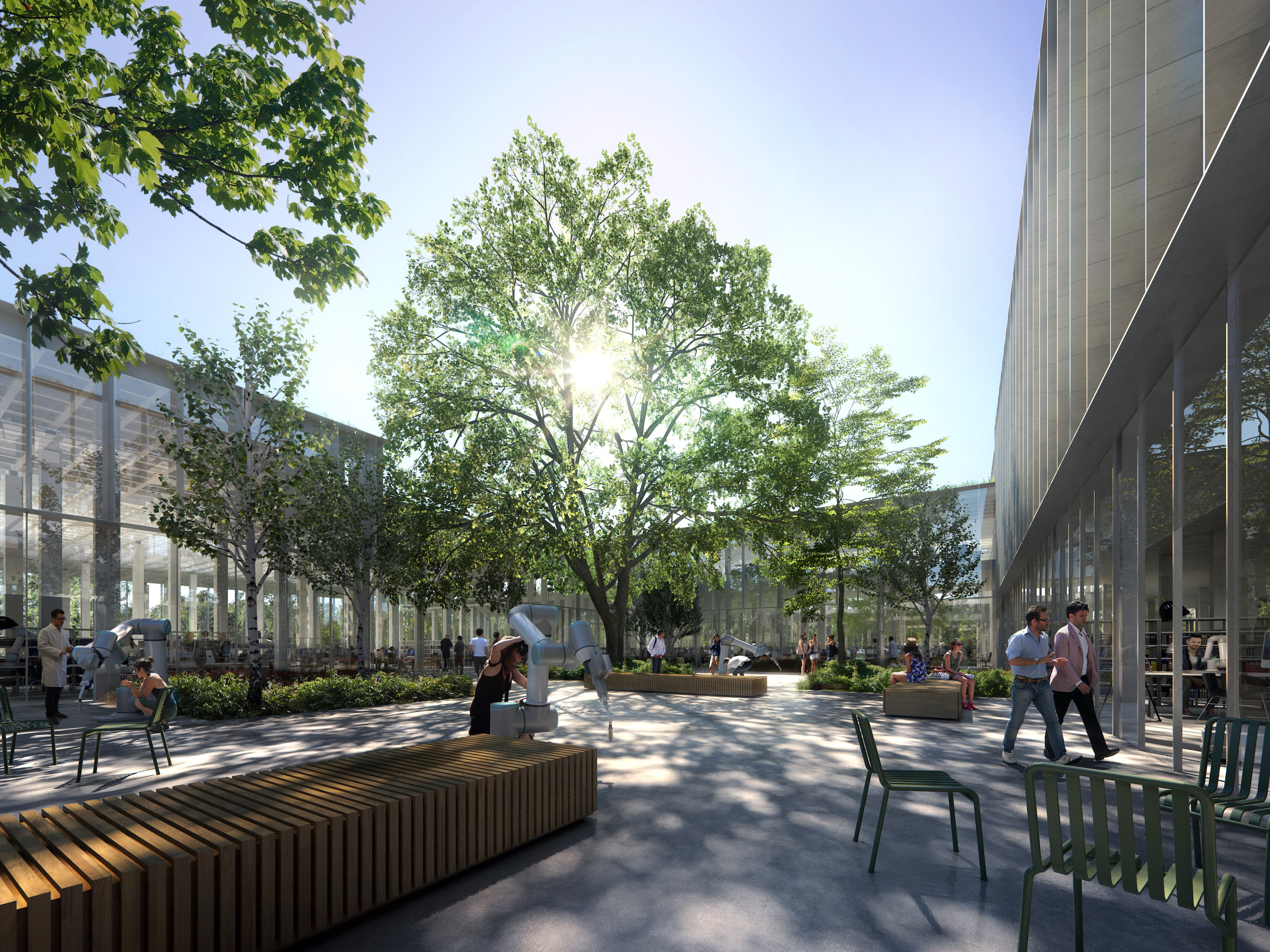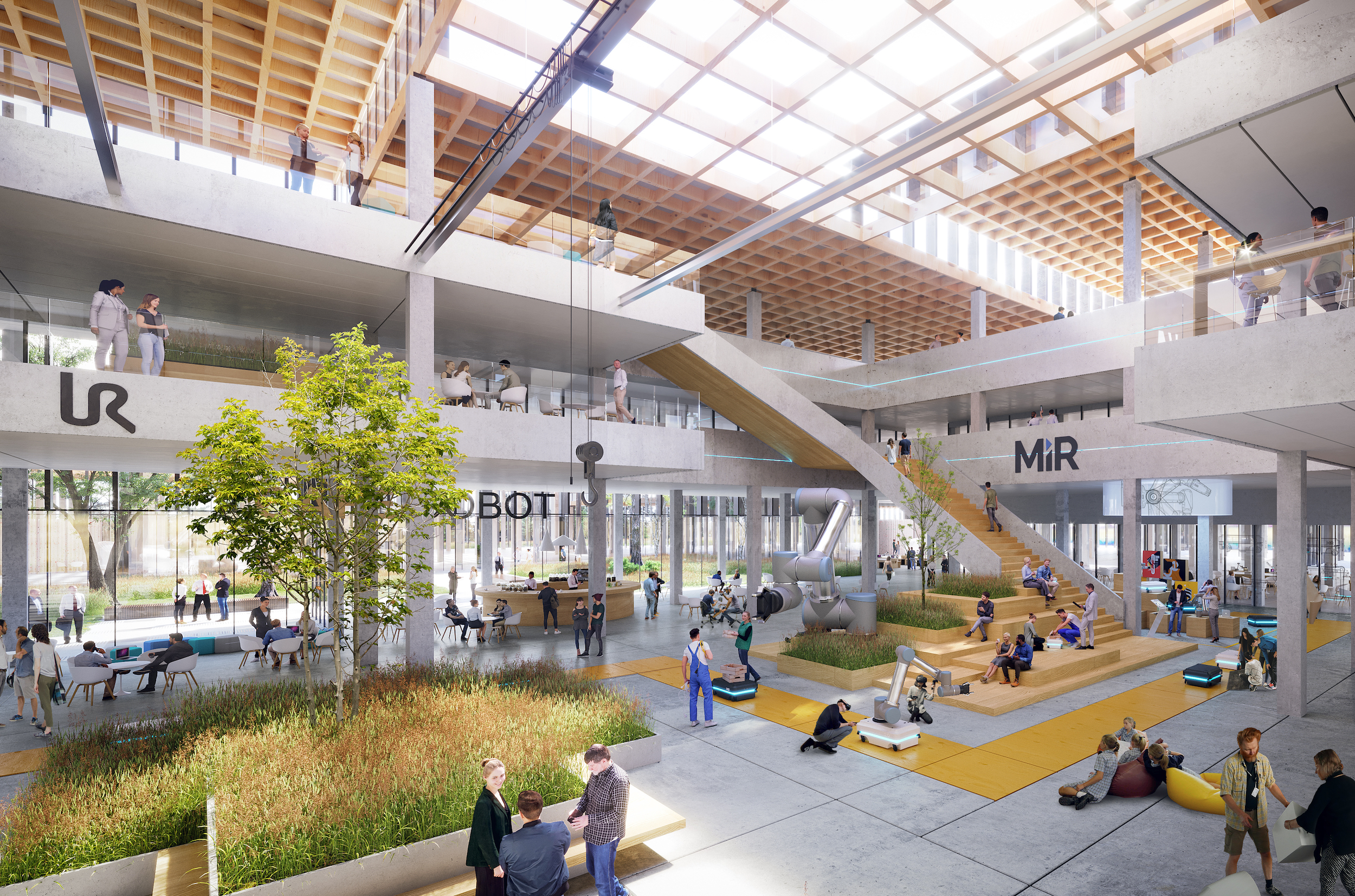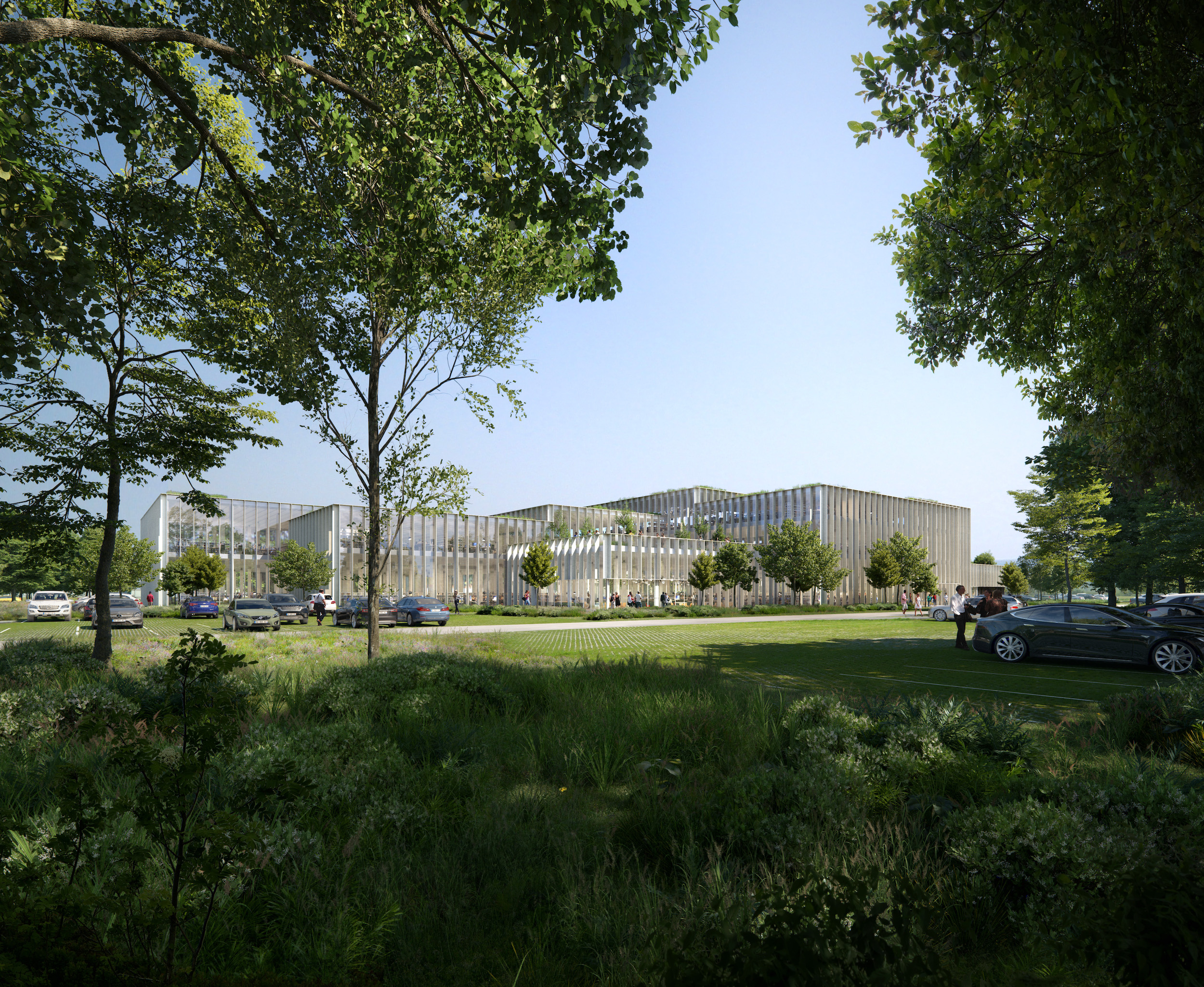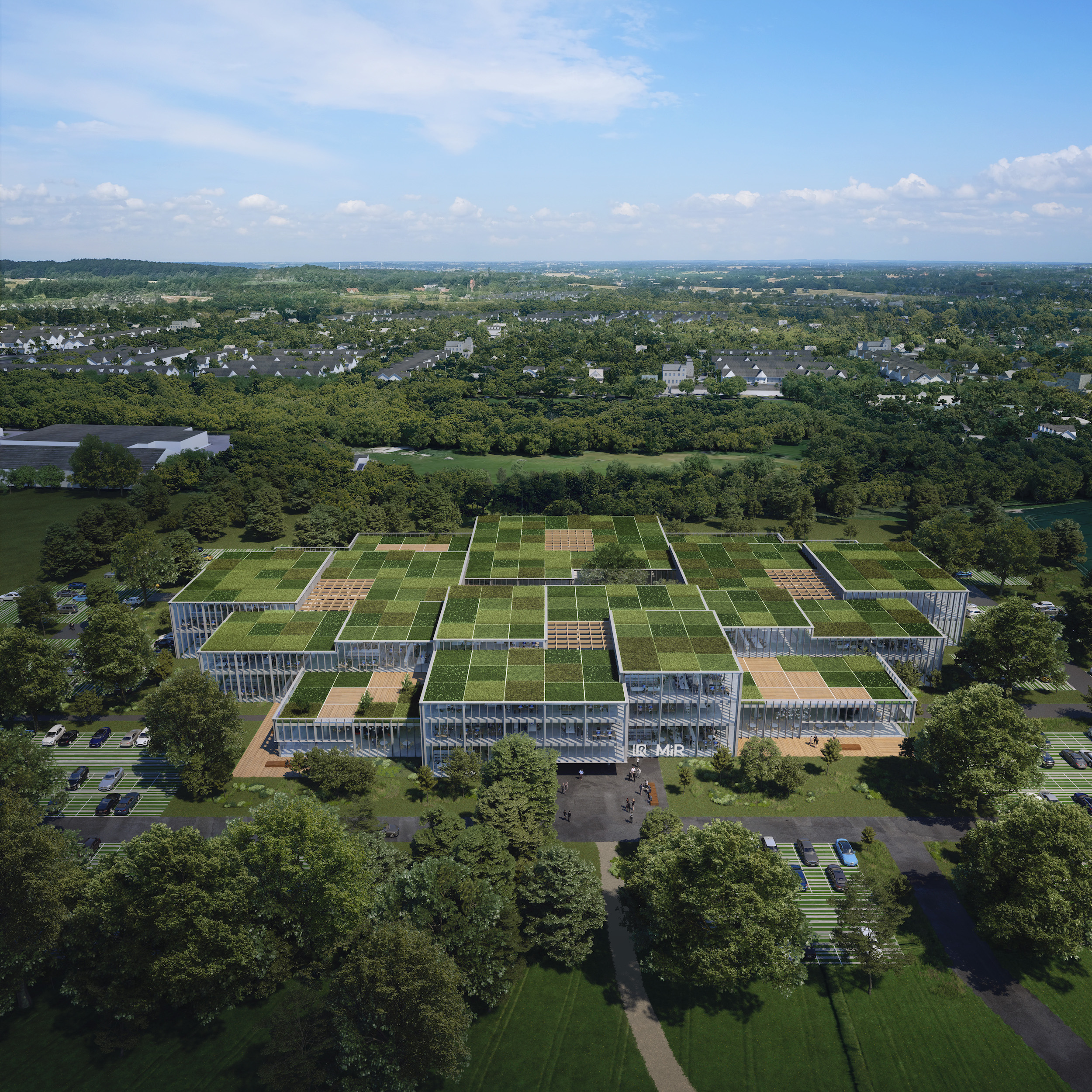Copenhagen-headquartered architectural practice 3XN has revealed its competition-winning design for a campus that will serve as the future home of two leading industrial robotics firms: Universal Robots (UR) and Mobile Industrial Robots (MiR). The roughly 215,000-square-foot space, located in Denmark’s third-largest city, Odense, appears from the design renderings to be more or less a standard, state-of-the-art tech campus with plenty of integrated green space, open workspaces flooded with natural light, bustling communal social spaces, and plenty of mass timber.
The campus, however, is envisioned as a so-called Cobot Hub where collaborative robots—cobots—share workspaces with their human counterparts. As noted by 3XN in a press release, Odense is actually known as the “Cobot Capital” of the world and the 3XN-designed campus will, appropriately, be the largest hub of its kind when completed. According to statistics compiled by trade association Odense Robotics in a February 2020 announcement of the forthcoming $36 million Cobot Hub, roughly 8,500 people work for Denmark-based robotic firms with around 3,900 being based in Odense, which was historically a major shipbuilding hub and is perhaps best known as the birthplace of Hans Christen Andersen. If growth forecasts hold, the Danish robotics industry could employ 25,000 people by 2025.

“UR and MiR’s offices are spread across five different addresses in Odense, and we’re growing rapidly, which has meant that we have been challenged space-wise,” said Søren Nielsen, CEO of MiR, in a statement. “This is the reason why we will now group most of our activities in a new joint domicile, which will be the world’s largest hub for collaborative robots. At the same time, it gives us the opportunity to establish a strong professional environment and the best facilities that will help to attract talents from all over the world to work with cobots.”

UR and MiR, which also share a robotics hub opened in 2019 in Barcelona, are both owned by Massachusetts-based automatic test equipment giant Teradyne. UR specializes in robotic arms while MiR is an industry leader in the development of autonomous mobile robots (AMRs)
“We have worked closely with the users of the building since the beginning of the process, and we have conducted many interviews to outline what the new building needs to deliver,” explained Audun Opdal, architect and senior partner at 3XN. “A lot of different elements had to come together. The new building will house two independent companies that need everything from traditional office space to workshops, laboratories, and creative robot ‘playrooms’, where the robots of the future are developed.”

To best accommodate the two companies that will be sharing the campus, 3XN has designed a flexible, highly adaptable space comprised of modular components that can be adjusted to meet the distinct requirements of UR and MiR. As detailed by the firm, “[…] the cubic volumes form a strong architectural expression and provide a flexible framework so that the building can be scaled up or down according to future needs. This means that significant parts of the building’s structure and materials can be reshaped and reused.”
Like with other 3XN projects, the Cobot Hub embraces a circular design in which the entire wood construction can potentially be recycled in the future.

In addition to its focus on sustainability and high adaptability, 3XN’s design also emphasizes cross-company collaboration between the sentient workforce of the campus via several common areas and communal amenities including a spacious shared central courtyard that the firm incorporated into the design as the social heart of the campus. (It would appear that the outdoor space isn’t necessarily envisioned as a robot-free zone.)
Cobot Hub is expected to be completed in 2023, year of the robot boss.
